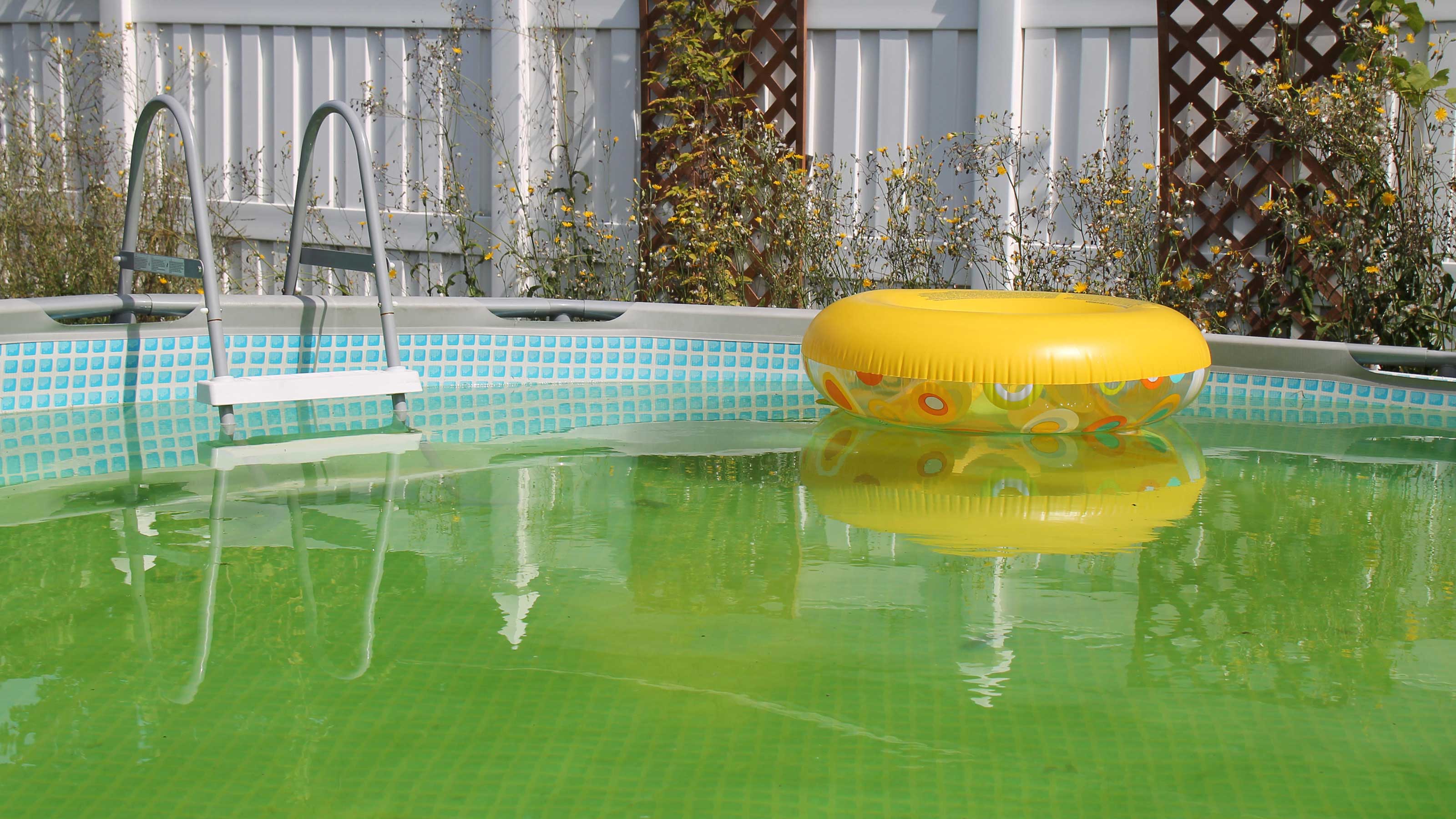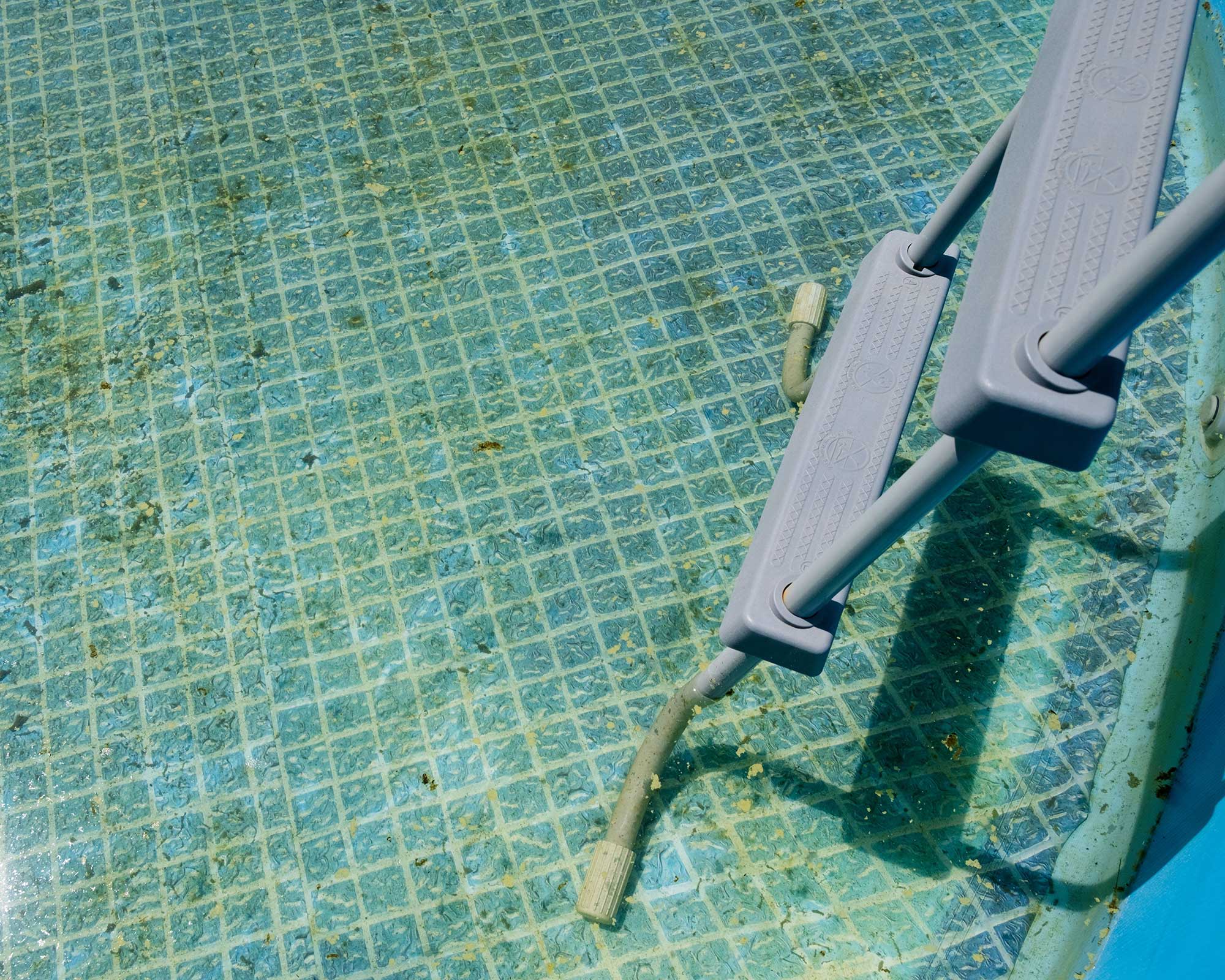Mustard algae in a pool: what to look out for and how to get rid of it
Enjoy a happier, healthier swim by getting rid of mustard algae in a pool – we explain how


Spotting mustard algae in a pool will quickly put you off the idea of a swim. Naturally, this is not what you want when temperatures soar and a quick dip seems like the only solution to cool down.
Similar in appearance to sand, mustard algae can spread quickly along the bottom and sides of a backyard pool, making the water cloudy. Not only does it spoil the overall look, but it can also harbor bacteria, meaning a swim amongst it can be potentially dangerous.
Unfortunately, it's trickier to get rid of than the slimy green algae that's most commonly seen, as it has a high resistance to chlorine. But don't despair – there are ways to tackle this watery weed.

Mustard algae can look like sand at the bottom of a pool
How to get rid of mustard algae in a pool in 6 steps
Get your pool looking fresh and clean again by following these steps.
- Loosen the algae. Use a pool brush with a telescopic pole to loosen mustard algae from the walls and floor of your pool.
- Get vacuuming. Assemble your pool vacuum and clear up the loosened debris. Swim University advises switching the filter to 'waste' to do this, so that the infected water is disposed of down the drain. Remember to keep the water level consistent with a garden hose.
- Balance the water. Testing the water and getting the chemistry levels optimal will help the shock treatment be more effective at killing the algae.
- Apply a shock treatment. When getting rid of black algae, you need to use quadruple the amount of shock that you normally would. With mustard algae, use triple, according to Swim University. Pop all of your pool maintenance equipment in the shallow end before adding the shock, so it can be disinfected, too. Poolcareguy.com says to keep the filter running for 24 hours a day for a few days afterward. Keep brushing the sides and floor of the pool, and, if necessary, balance the chemicals again during this time.
- Apply a second shock treatment if needed. Still seeing mustard algae lurking in your pool after a few days? Shock it again, this time using the usual dose.
- Test the chemistry before your next swim. By now, your water should be clear with no signs of mustard algae remaining. Test your chemistry levels before jumping in for a swim to ensure it's safe to do so.

Mustard algae can be tackled with pool shock
What causes mustard algae in a pool?
As a general rule, the best way to avoid pool algae in the first place is a proper pool maintenance routine. This includes treating the water regularly to a pool shock, using a pool vacuum to clear up any debris, brushing the sides, and keeping the water chemistry in check. Regularly adding an algaecide to your pool can also help as a preventative measure.
Similar to green and black algae in a pool, mustard algae can spread from bathing suits and inflatables that have been previously used in lakes, rivers, or the sea without being washed in between. So, make sure to clean them thoroughly before putting them back in your pool to avoid the risk.

Take steps to prevent algae from forming in the first place to maintain a pristine pool

The garden was always a big part of Holly's life growing up, as was the surrounding New Forest where she lived. Her appreciation for the great outdoors has only grown since then. She's been an allotment keeper, a professional gardener, and a botanical illustrator – plants are her passion.
